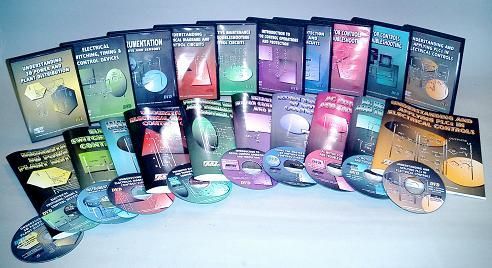
Industrial Electrical Control Course Assessment
Industrial Electrical Control Course :
Take the electrical control test from Business Industrial Network's Industrial Electrical Training Video Course Library.
Please consider our training while here ...

See the related certificate course at Industrial Electrical Training Video Course.
Industrial Electrical Control Course test details:
( 10 Questions )
Take the electrical control test from Business Industrial Network's Industrial Electrical Training Video Course Library.
Below, we explain how phase imbalance can cause your motors to overheat. Our course covers how to fix the issue and prevent insulation breakdown.
Understanding Phase Imbalance in Motors
How It Causes Overheating and Insulation Breakdown
In the world of electrical motors, efficiency and reliability are paramount. One critical factor that can significantly affect their performance is phase imbalance. This issue leads to operational problems. It can also shorten the lifespan and health of your motors. In this article, we'll examine how phase imbalance makes motors overheat. We'll discuss the effects of overheating and ways to avoid insulation breakdown.
What is phase imbalance?
Phase imbalance occurs when a three-phase motor doesn't receive equal power across its three phases. In a perfect world, the voltage and current in each phase would be equal, ensuring a balanced load. Different factors can cause an imbalance. These include uneven load distribution, bad wiring, and equipment failure. When this happens, one or more phases may take on more load. This imbalance can lead to higher current draw and overheating.
How Phase Imbalance Causes Overheating:
When a motor experiences phase imbalance, its efficiency suffers. Too much current in the overloaded phase causes extra heat. The increased heat happens due to higher resistance. This overheating can lead to several complications:
- Higher Operating Temperature: When the motor overheats, parts like windings and bearings endure increased temperatures. That overheating can cause them to wear out sooner.
- Overheating: Overheating lowers a motor's efficiency, causing it to use more energy to keep running, thus increasing operational costs.
- Thermal Damage: Continued operation in these heated conditions can cause the insulation around the windings to fail. Which in turn leads to motor degradation, short circuits, motor failure, or fire hazards.
Preventing Insulation Breakdown:
Here are some steps to reduce the risks of phase imbalance and stop insulation failure.
- Check and Track: Regularly monitor the voltage and current in each phase using power quality analyzers. Monitoring will help detect imbalances early and allow for prompt corrective actions.
- Load Balancing: Check if loads are distributed across all phases equally. Load balancing may require you to move loads or upgrade equipment. Balancing loads helps match your electrical system's capabilities better.
- Routine Maintenance: Schedule regular maintenance checks for your motors. Routine maintenance involves checking connections, tightening loose wires, and replacing worn parts. These steps help prevent imbalances.
- Use Protective Devices: Circuit protection devices like phase failure or overload relays. These devices shut down the motor automatically when they detect an imbalance. The shutdown helps reduce the risk of overheating.
- Think About Upgrades: If your system often has a phase imbalance, look at harmonic filters or phase correction devices. These can boost power quality and lower the risk of imbalance.
In short, phase imbalance can cause overheating and damage insulation in motors. The imbalance seriously affects the performance and the life of the motor. Understanding the causes and taking preventive steps can help ensure your motors run smoothly. This approach can also make them last longer and operate safely. These steps are key for keeping your equipment healthy. They also ensure the safety and reliability of your whole electrical system. Focus on monitoring and maintenance to better maintain the efficiency and safety of your motors.
Published:
